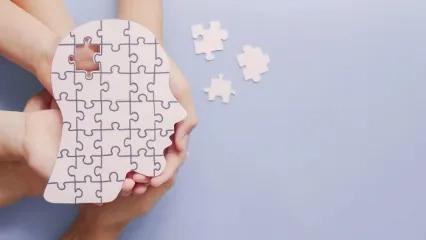Alo Yeditepe
Alo Yeditepe
Pudendal Nerve Compression
Pudendal Nerve Compression’, also known as “Pudendal Neuropathy”, which is one of the most common causes of genital and pelvic pain, is the problem of one in every 15 people in our country. However, due to the difficulty of diagnosis and the unfamiliarity of many physicians with the subject, patients may have to live with problems for years without diagnosis. Thanks to the new diagnostic method developed by the Neurology Specialist, a much faster and more accurate diagnosis can be made. Thus, it is possible to start treatment without wasting time
A problem similar to wrist nerve compression, known as carpal tunnel syndrome in the society, can also occur in the pudendal nerve responsible for the genital area. This problem, which manifests itself with pain in the genital area, especially with sitting, sexual function problems, urinary or faecal incontinence, is often confused with urinary tract infections or prostate inflammation. Therefore, patients may have to continue living with pain despite months of antibiotic treatment. Since pudendal nerve compression can cause physical problems as well as consequences that can lead to isolation from the society, timely diagnosis is of utmost importance.
Pain during sexual intercourse is among the diagnostic supportive findings…
This problem, which occurs especially in women who give birth a lot, can start suddenly due to reasons such as heavy lifting, reverse movement, falling or a heavy sports activity, or it can occur gradually over time. Stating that the most prominent feature of pudendal nerve compression is the pain sensation experienced by the patient while sitting, our specialist gives the following information about the problems experienced by the patient:
‘The pain caused by pudendal compression is usually located close to the nerve. Patients mention a feeling of alienation in the vagina and rectum. However, patients complain of pain during bowel movements, unbearable pain during urination, especially when constipated, due to pressure. While it is felt less in the morning hours, the pain that increases during the day is described as burning, tearing, electrifying, stabbing like a sharp knife. It is not accompanied by itching or loss of sensation. In such a case, the presence of a different problem should be suspected. In addition, although not in all patients, pain in the buttocks while sitting, pain radiating to the sciatic nerve area and not responding to treatment, frequent urination, pain during sexual intercourse, especially in women, are among the diagnostic supportive findings.”
Patients with pudendal nerve compression cannot perform simple daily activities such as driving a car or cycling. In short, as the quality of life of the patients deteriorates, they have difficulty in performing the activities required by daily life.
Cannot be Detected by Imaging Methods
Different methods ranging from laboratory findings to imaging are used for the diagnosis of pudendal nerve compression. However, since the underlying cause is often not found, the source of the problem is thought to be psychological and the patient may be directed to receive treatment in this direction. Stating that it is very difficult to perform electrical diagnostic methods (such as EMG, SEP) since the nerve passes through the skin, our specialist gives the following information: ‘The pudendal nerve is located on both the right and left sides of the genital area, but neuropathic pain is usually seen on one side or more on one side. Since the evaluations in the examinations performed so far have always been made in a way to evaluate two nerves in the midline at the same time, the diagnosis could not be made because the non-problematic or less problematic nerve covered the findings of the problematic nerve. In addition, in the past, examinations were always performed lying down, even though the pain occurs when sitting. This prevented the problem from being detected.”
Diagnostic Method Recognised by International Authorities
Explaining that they started to evaluate the two nerves separately with the newly developed electrical diagnosis method, our specialist continues his words as follows: ‘We have further developed the existing method. With the small electrodes we placed on the right and left, we were able to evaluate the two nerves separately. Thus, we were able to determine whether there is unilateral or bilateral Pudendal nerve compression. In addition, we were able to perform the shooting not only lying down, but also in the sitting position where the pain is most severe. In this way, diagnoses that could not be made for 3-4 years in the past can now be made faster. This method, which we apply as a standard diagnostic method, has also been accepted by international authorities.“
This content was prepared by Yeditepe University Hospitals Medical Editorial Board.
”
See Also
- What is Parkinson's Disease? What are the Symptoms of Parkinson's Disease?
- Curiosities About Cerebral Palsy
- The Use of Botox in Neurological Diseases
- What is a Stroke (Apoplexy)?
- How to Protect Brain Health?
- What is Myasthenia Gravis Symptoms and Treatment Methods
- What is Epilepsy?
- School Stress Invites Sleepwalking
- Daughter-in-Laws Care for Alzheimer's Patients
- Recommendations From The Expert For Migraine Patients
- As Insomnia Increases, Its Harmful Effects on the Immune System Also Increase
- 8 Tips for Better Sleep
- Initial Symptoms of ALS Considered To Be Nerve Compression
- Healthy Microbiota Reduces the Risk of Alzheimer's
Alo Yeditepe




